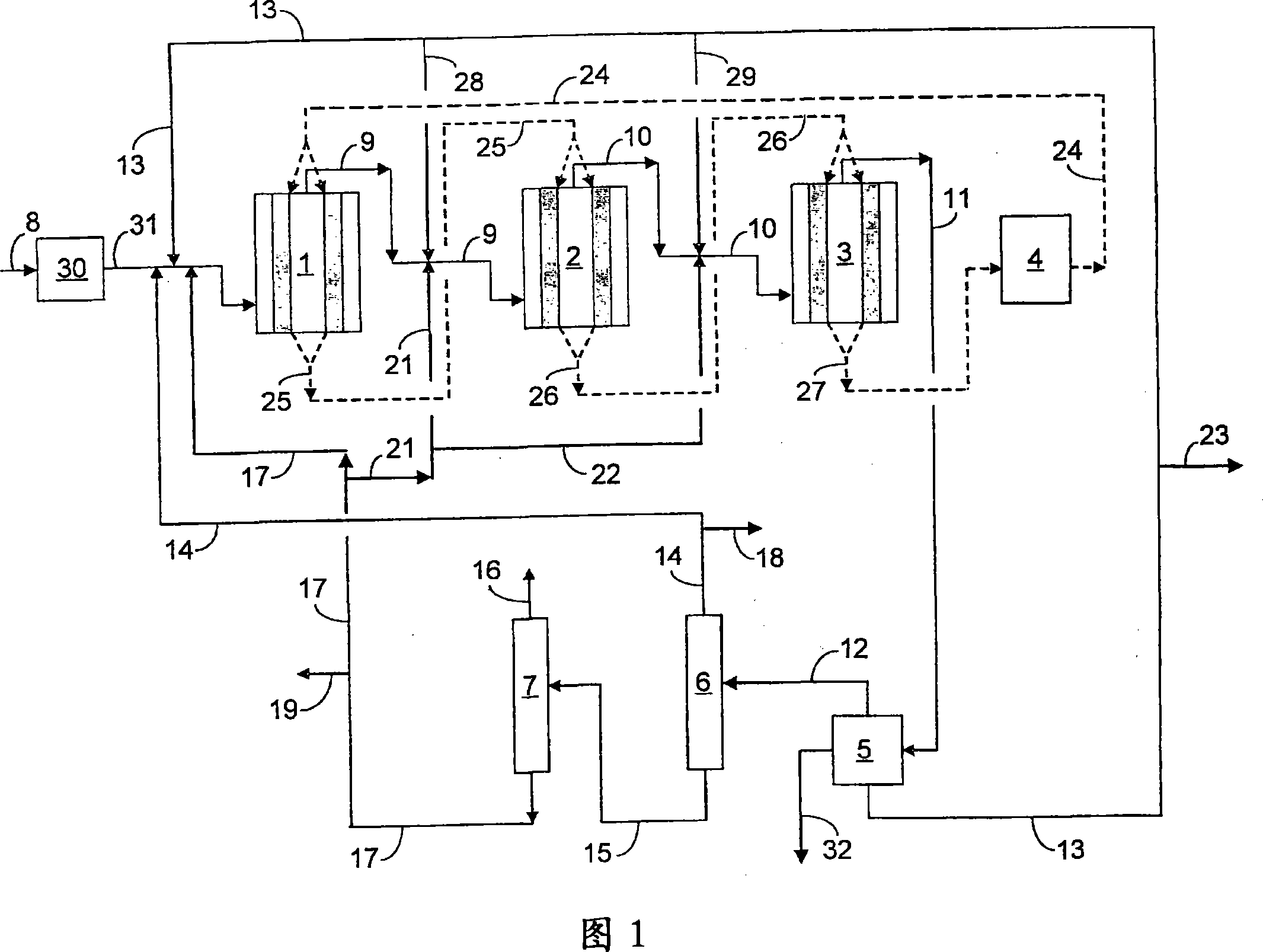Conversion of an alcoholic oxygenate to propylene using moving bed technology and an etherification step
An oxygen-containing and propylene technology, which can be used in carbon compound catalysts, hydrocarbon production from oxygen-containing organic compounds, hydrocarbons, etc., can solve problems such as reduced conversion activity
- Summary
- Abstract
- Description
- Claims
- Application Information
AI Technical Summary
Problems solved by technology
Method used
Image
Examples
Embodiment Construction
[0017] The feed stream to the present OTP process comprises one or more alcohol oxygenates mixed with an aqueous diluent. The concentration of said one or more alcohol oxygenates in the feed stream is preferably at least 70% by weight, with concentrations greater than 90% being preferred; when the alcohol oxygenates in the feed stream are 95% by weight or higher The best results are obtained when the level is . Alcohol oxygenates present in the feedstream preferably contain at least one oxygen atom and about 1 to 6 carbon atoms, and generally best results are obtained with aliphatic alcohol oxygenates containing 1 to 4 carbon atoms. Suitable alcohol oxygenates for use in the process include saturated linear or branched aliphatic alcohols and their unsaturated counterparts. Examples of suitable aliphatic alcohols include methanol, ethanol, isopropanol, n-propanol, butanol, isobutanol, t-butanol, pentanol, and mixtures of these aliphatic alcohols. Methanol is the most preferre...
PUM
| Property | Measurement | Unit |
|---|---|---|
| diameter | aaaaa | aaaaa |
| diameter | aaaaa | aaaaa |
Abstract
Description
Claims
Application Information
 Login to View More
Login to View More - R&D
- Intellectual Property
- Life Sciences
- Materials
- Tech Scout
- Unparalleled Data Quality
- Higher Quality Content
- 60% Fewer Hallucinations
Browse by: Latest US Patents, China's latest patents, Technical Efficacy Thesaurus, Application Domain, Technology Topic, Popular Technical Reports.
© 2025 PatSnap. All rights reserved.Legal|Privacy policy|Modern Slavery Act Transparency Statement|Sitemap|About US| Contact US: help@patsnap.com

